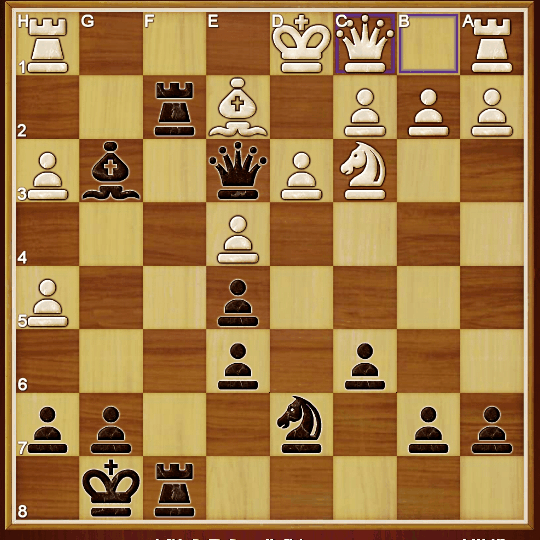Often you lose a game because you make some disastrous moves rather than your enemy making brilliant moves. This is usually due to a lack of strategic understanding.
Just move once.
White makes the mistake of moving the Knight twice. It is usually best to move pieces just once in the early opening. Of course there are exceptions.
Stay-loose
The opening proceeds normally, but Black has cramped up the Queen Bishop which does not go unnoticed by White.
Short termism
White backtracks the Queen Bishop to protect the Knight on c3 from the Pin as well as to leave g5 open for the Knight.
Watch out for traps.
White seems determined to capture Black's Queen Bishop on e6. This is in fact a trap.
Inertia.
Despite Black threatening to Check with Bf2,White proceeds to exchange the Knight for the Bishop. This is as though there is a momentum that cannot be overcome. A good player must be able to change their plan at any moment.
Penetration.
Black gladly accepts the offer. The f-collumn is also open and White cannot Castle. A clear advantage for Black.
Defence bad?!
White seems to realize the trouble it is in and moves g4 to stop the Knight from joining the attack.
Black offers to exchange the Bishop for the Rook which White declines. This may seems good tactically but allowing a protected enemy Bishop deep in your territory is a strategic blunder.
Brilliant sacrifice.
Black makes a truly brilliant move in Knh5. This opens the way for the Rook as well as moving the Pawn out of the way.
Retreat!
White's Queen retreats in the face of such concentrated attack.
Fortune favours the brave.
White makes a reasonably good move with Be3 but Black counters by offering to exchange the Rook for the Bishop. White now realizes that this would lead to Checkmate in two moves.
The back door.
White has to move the King Bishop to e2 to prevent Checkmate but Black makes a brilliant move with Rh2, threatening to Checkmate via the 1st row.
The only thing to do.
White decides that the only way to stave off defeat is by sacrificing the Rook.
Last resort.
White has to move the Queen to c1 to prevent Checkmate and risks exchanging the Queens.
Black makes another brilliant move with Qg1 threatening to end the game with a discovered attack Checkmate..
The future is bright.
That move is so brilliant that White is forced to suicide the Queen.
Just too brilliant.
White has to move the Knight to b1 to prevent Checkmate and to create an escape route via c2.
Black counters with a ridiculously brilliant move with Bc3. This blocks the escape route completely
Smooth operator.
With no escape possible, it's just a matter of time. A series of brilliant moves is capped by an equally elegant Checkmate.
Alternate ending:
This ending is far less glamorous.
The long reach.
The open f-collumn is absolutely disastrous for White.
A win is a win!
The Checkmate is anti climactic. But it's still a great victory.
In the end, the mistakes by White, it's ignorance of strategy and a couple of brilliant moves by Black are the takeaway from this game.













































